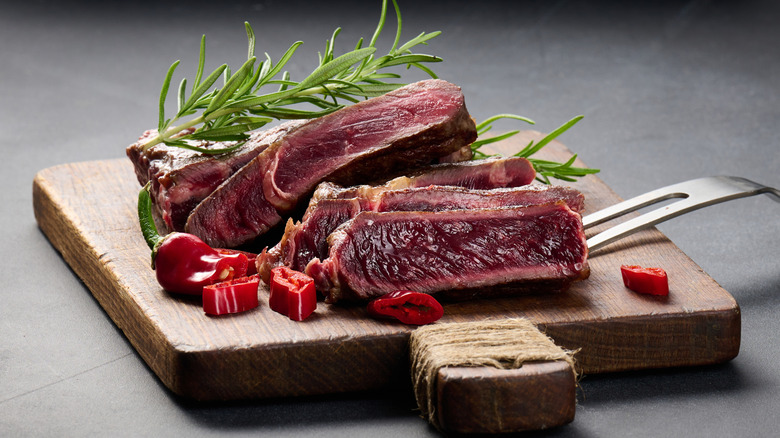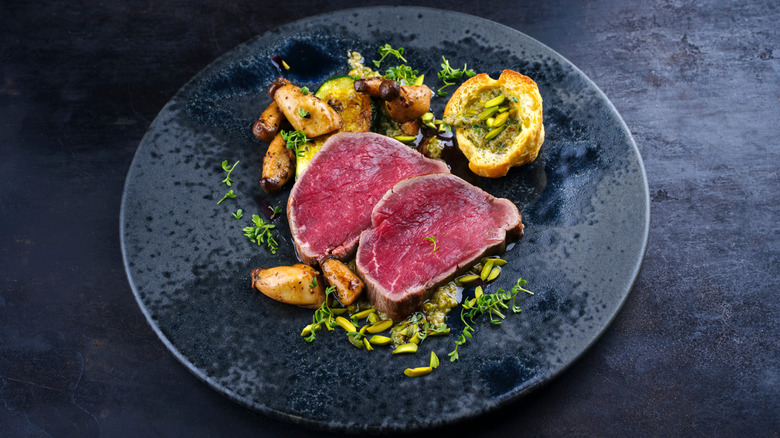How Rare Is Too Rare For Steak?
Going to a steakhouse can mean putting a dent in your wallet, so you want to know how to expertly order your steak to get the best cut, cooked how you like it, at a price you're willing to pay. But there's one request that could possibly be refused: steak cooked "blue" — which is even rarer than rare. Juan Cabrera, Executive Chef at The Restaurant at North Block, spoke to The Takeout about blue steak's possible health concerns and how to enjoy it safely.
"'Blue,' or 'black and blue' as they called it in traditional old school steakhouses, is when a steak is seared on the outside, but essentially raw on the inside, with an internal temperature typically around [115 degrees Fahrenheit]," Cabrera noted. He added that the beefy flavor is intensified by getting a good sear over very high heat.
Foodborne bacteria, which are among the most common reasons for food recalls, can make you very sick. Even though bacteria on steak would be found mostly on its surface, there can still be a danger because the interior remains uncooked. Cabrera explained, "While this can be safe if the surface bacteria are thoroughly seared, it may pose a risk if the meat is not handled properly." Admitting that restaurants may not want to take any chances, he observed, "Restaurants may avoid cooking to 'black and blue' or 'blue' due to the risk of foodborne illnesses like E. coli, especially if the meat is not verified as high-quality or specifically intended for rare cooking."
Blue steak's virtues and how to make it safely
Blue steak is named after the purple-blue, raw beef color of its interior. Black and blue steak is charred over a hot grill instead of seared in a pan. Fans do not only appreciate its amped up beef taste, but its very tender consistency. There's also a variety of textures with the seared or charred outside, and a temperature contrast between the hot exterior and the cool inside.
If a restaurant won't cook you a blue steak, you can make it yourself using a few precautions. (You can safely make homemade beef tartare, after all.) As Juan Cabrera described it, "You can safely cook a blue steak at home if you select a high-quality, thick-cut steak. My preferred choice would be tenderloin or a ribeye from your local butcher that you trust."
Cabrera explained how to cook blue steak, saying to first bring the meat to room temperature, and then pat it dry and season for an even sear. He continued, "Heat a cast iron skillet or grill to extremely high heat [500 degrees Fahrenheit]. Sear each side for 30 to 60 seconds until a brown crust forms. Allow it to rest for a minute to make sure it is nice and juicy," he said. "This step is extremely important!" Make sure to always use clean tongs and wash them again after flipping the steak. Once it's cooked, you can season the steak with additional spices, or serve it with a sauce. But you may just want to experience the blue steak's unique flavor all on its own.

